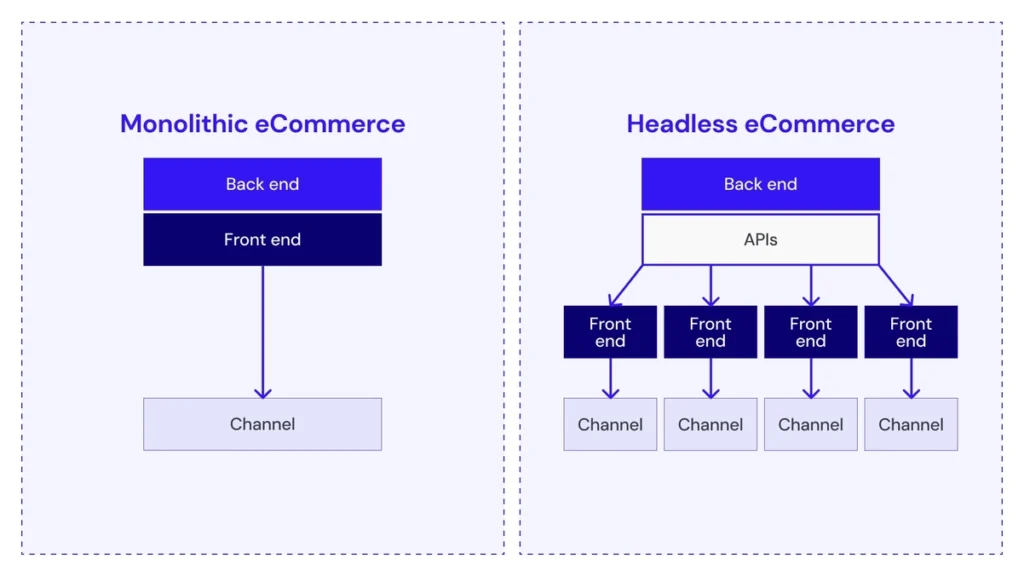Why your business should adopt an API-driven architecture
Jul 20, 2022 10–12 min read

To deliver powerful digital experiences in today’s highly-competitive business landscape, your organization needs fast and efficient development workflows that are built to scale.
To deliver powerful digital experiences in today’s highly-competitive business landscape, your organization needs fast and efficient development workflows that are built to scale. And with the right engineering, implementation, and management of both internal and external application programming interfaces (APIs), your business will be better equipped to grow and adapt over time.
In the traditional approach to building web applications, APIs are introduced at specific points in the development process as needed, when major elements of the application have already been built. This stems from the philosophy that an API’s job is solely to connect different applications and services together.
More modern IT teams, however, view APIs as the backbone of their web application, and prioritize their design and implementation from the beginning, all the way through to the end of the development process. This is called API-first or API-driven architecture.
Let’s say you’re designing an app that helps users discover new restaurants in their local area. Rather than writing fresh code to create an interface that allows users to interact with a digital map and order food for delivery, you could implement the Google Maps API and Grubhub API, then build the rest of the app around those integrations—saving enormous time, money, and effort. This is a simple example of taking the API-first approach.
API-driven architecture—which has exploded in popularity over the past few years—offers a variety of new possibilities when it comes to designing, developing, testing, and maintaining applications such as eCommerce storefronts, mobile apps, internal business solutions, and so on. So if you and your organization’s stakeholders are thinking about adopting this approach, here are some of the key benefits to consider:
If you take the traditional development approach, your team may end up building application components that aren’t compatible with future APIs—due to the way in which that service structures its data. Then, you’ll be left with the difficult choice of entirely redesigning the application component, or simply not being able to effectively access it via an API. This dilemma is avoided with an API-first approach, since each service within the application is developed from the ground up with a pre-determined API structure in mind.
A lot of businesses are migrating from traditional, monolithic eCommerce platforms to headless or microservices architecture , where the modules of an application are decoupled so that they can be managed and scaled independently. This gives marketers more control over the front-end experience, as they can customize key UX and UI elements—from customer portals, to product pages, to shopping carts—without disrupting back-end functionality, such as payment processing or inventory management.
By breaking up monolithic applications into modular components, different development teams can use their own preferred tools and programming languages, leading to more efficient workflows and faster deployment times. Under a microservices or headless system , front and back-end services communicate with each other via APIs, making API-driven architecture ideal for this kind of setup.

When installing cloud-based apps, whether it be an ERP, CRM, or HRM, it’s crucial that your web application is built to integrate smoothly with external APIs. One of the main reasons why developers prefer working under API-driven architectures is because they’re specifically designed for cloud connectivity—which means that individual modules don’t require significant reworking whenever a new cloud-based app is introduced to the environment. This model enables development teams to migrate from legacy systems and leverage new innovative technologies more efficiently.
For teams that embrace DevOps and CI/CD methodology, API-driven development helps deliver software updates and modifications faster. As mentioned earlier, changes to one module within the application will not create a ripple effect that negatively impacts other parts of the system—enabling design, engineering, QA, and production teams to work at their most nimble pace, and prevent delays in the software development pipeline.
If a web application or API goes too long without being updated, it will eventually become obsolete. After all, older applications don’t integrate well with modern APIs, and vice versa. By making APIs the focal point of your development strategy, you will more systematically test and update each module of the application, leading to better scalability overall.
Expanding further on the intricacies of API-driven architecture, let’s explore some additional concepts and best practices that can empower eCommerce companies to leverage APIs effectively:
By adopting an API-first or API-driven architecture, your organization can streamline internal workflows and better meet the needs of its customers. But designing, implementing, and maintaining this infrastructure can be challenging, especially for growing businesses running on a variety of complex tools and processes. That’s where Codal comes in.
We’re an award-winning web design and development consultancy with over 15 years of experience creating cutting-edge digital solutions for organizations across all industries. Having worked with countless APIs in a wide range of environments, our team has the technical expertise and resources to build an API-driven infrastructure that will enable your business to run more efficiently, exceed customer expectations, and boost revenue.

Explore our latest expertise on innovation, design, and technology, or connect with us directly to see how we can help accelerate your digital transformation.